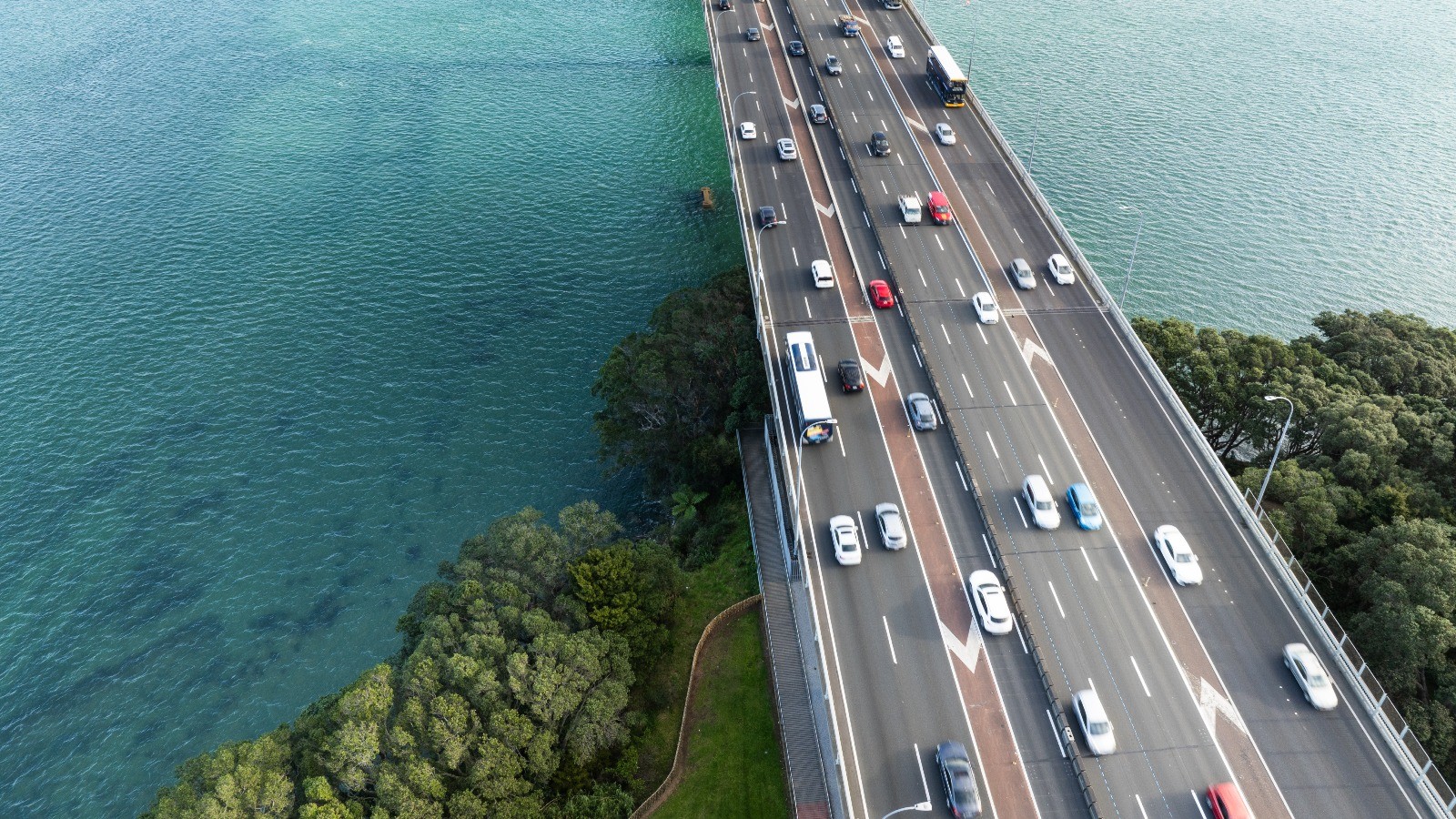Investing in infrastructure
New Zealand is facing a well-publicised infrastructure deficit of over $200 billion as a result of decades of underinvestment.1 The New Zealand Infrastructure Commission has estimated that it will cost $1 trillion over the next 30 years to address this deficit and bring the nation's infrastructure to a standard comparable with other OECD countries.2
Historical underinvestment is due to a range of interconnected issues, including financial constraints in funding and financing infrastructure projects, policy and institutional settings, and uncertainty regarding the pipeline of projects. These factors have collectively impacted the ability to improve efficiency, develop skills, attract investment, innovate and deliver much-needed infrastructure.
To drive economic growth and resilience, the Government has identified infrastructure development as a priority, suggesting a range of legislative and policy changes to tackle existing challenges. The scale of investment and amended settings create significant opportunities for private investors.
Evolving the infrastructure ecosystem to create greater certainty and efficiency and facilitate private investment
The Government’s “Going for Growth” agenda seeks to turbo charge the New Zealand economy. Through this, it is taking steps to enable and encourage investment into New Zealand including through changes to the Overseas Investment Act and Foreign Direct Investment rules. Infrastructure is specifically identified as a core pillar of the “Going for Growth” strategy and a range of changes are being made across the infrastructure legislative landscape and ecosystem including:
Create |
Develop |
Amend |
Revise |
| Creation of National Infrastructure Funding and Financing Co (NIFFCo) as the investor shopfront for private capital investments into public infrastructure in New Zealand. NIFFCo aims to make it easier for investors by acting as a single point of contact for infrastructure proposals, advice, and support. | Development of a new approach and framework to support evaluation and progression (where appropriate) of market-led proposals. Market led proposals fall outside normal planning and competitive procurement processes with the expectation that it will allow the Government and private infrastructure investor to deliver real value, productivity improvements and innovation promoting economic growth. Market-led proposals must meet public interest objectives, provide value for money and justify exclusive negotiation with the Government.3 |
Amendments to the Infrastructure Funding & Financing Act (IFFA), The IFFA allows the creation of a special purpose vehicle to raise finance for projects with costs repaid through a levy charged to properties that benefit from the project. Amendments are intended to improve the effectiveness of IFFA and make the process simpler and cheaper as well as broadening the IFFA to apply to major transport projects. |
Revision of the PPP (public private partnerships) framework with altered risk allocations to reflect market sentiment.6 Bringing new PPP opportunities to market is expected to help attract international capital as well as expertise and capability needed to deliver New Zealand’s growing pipeline of infrastructure projects. |
Creation of the Fast Track Approvals Act aims to ease regulatory burden and establish an approvals regime for a range of significant regional and national infrastructure and development projects. It can streamline processes and reduce barriers for investors in infrastructure projects in an effort to promote economic growth. |
Development of a 30-year National Infrastructure Plan by the New Zealand Infrastructure Commission.4 This will provide a bipartisan pipeline of projects to create a more predictable investment environment.
|
||
Development of a Funding and Financing Framework a key objective of the framework is to broaden the funding base for investments and utilise private capital, where efficient.5 A key principle of the framework is that Crown funding and/or financing should only be sought when all other sources have been exhausted paving the way for private sector investment. |
Investing in infrastructure Key sector updates
Where are the investment opportunities?
Key areas where investment is likely to be sought are summarised below (current add footnote that as at March 2025):
Energy
NZ is focused on electrification and renewable energy to fuel decarbonisation of the economy.
This will require increased investment in renewable energy, wind and solar in particular. In addition to the ‘gentailers’, increased investment is expected from independent developers, a new feature to the market, in order to meet New Zealand’s decarbonisation goals.
Substantial investment in transmission is crucial to support increasing electrification, more renewable energy integration and rising demand over the next decade. Transpower is planning a NZ$6.5b investment program aimed at upgrading its networks’ capacity.
Significant investment will also be required in New Zealand’s distribution networks.
Telecommunications
There have been high levels of activity in recent periods as major players refine their asset bases and ownership of infrastructure to align with future strategic objectives. As such, portfolio optimisation continues to be a defining theme across the sector.
Transport
Transport investment is expected to make up around 50% ($120 billion) of the Government's total infrastructure investments over the next 10 years.7
A programme of 17 Roads of National Significance (RONS) has been identified and are the most imminent investments - these must seek private investment and alternative funding (e.g. tolls) as a first port of call before considering Crown funding/financing.
Other large ‘mega-projects’ are in the planning stages and could come to market.
Guidance on interisland ferry procurement is expected in late 2025, with further rail investment expected, along with the opening of the $5.5 billion City Rail Link.
Potential for bus procurement model changes to fund electrification.
Water
Reform of how three waters is delivered is underway including increased regulation. This should bring increased levels of investment over time. Potential for private sector investment through metering and plant investment (e.g. Build Own Operate Transfer model) and outsourcing of some services to improve efficiency and sustainability.

Health
Over the next 30 years New Zealand will have to spend $115 billion on hospitals (capital, maintenance and renewals).7 Many are potential PPP candidates.

Housing
Kāinga Ora review has reduced expenditure on social housing and the role of the Crown and an increased focus on the role of Community Housing Providers and how those providers, along with the Crown, can increase supply. Demand continues to exceed supply for social and affordable housing.
Potential for New Zealand Defence to procure its largest army camp at Linton Barracks as a PPP.
The Government has progressed the Fast Track consenting process to advance a number of large scale residential development opportunities, is establishing a government backed debt facility (initially, small scale) for Community Housing Providers (social and affordable housing) and, generally, is pushing to reduce ‘red tape’ for consenting new development (across all property sectors).

Social infrastructure
PPPs proposed for Courts and Corrections.

Asset recycling
Many New Zealand ports, airports and electricity generators and electricity distribution companies are owned or part-owned by local government bodies. A desire to free up capital, combined with a focus on diversification and resilience has the potential to drive transactional activity in the sector. This trend is likely to continue.
1 Sense Partners, New Zealand’s infrastructure challenge: Quantifying the gap and path to close it, 2021
2 ibid
3 New Zealand’s infrastructure challenge: Quantifying the gap and path to close it
4 The Treasury, Market-led proposals: Guidelines for submission and assessment, 2024
5 The Treasury, Funding and financing framework, 2024
6 The Treasury, New Zealand PPP Framework: A Blueprint for Future Transactions, 2024
7 BusinessDesk, Transport dominates investment intentions - Treasury, November 2024
8 NZ Infrastructure Commission











